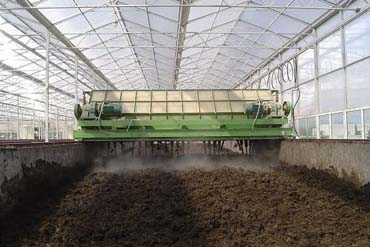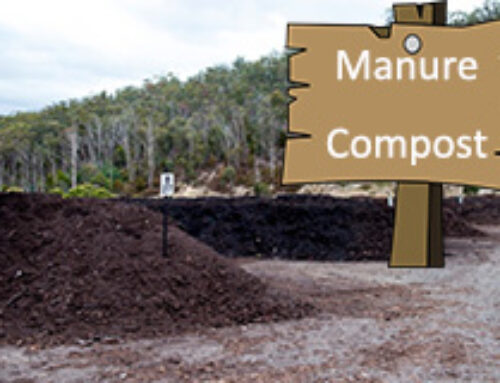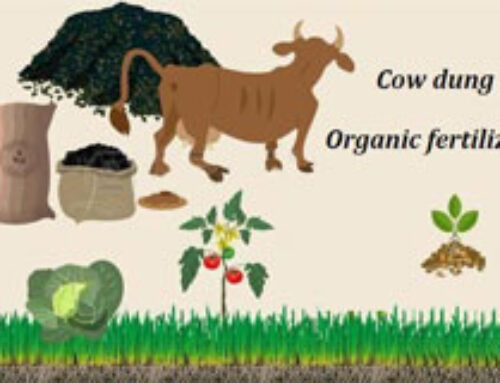Vermicomposting
Vermicomposting is a process that uses various worms to transform wastes into nutrient-rich fertilizers. It can be used to dispose of organic waste, such as household rubbish, yard waste, feces of animals, and waste materials during agriculture. Small-scale vermicomposting is a common phenomenon used at home. It is environmentally convenient for families to handle household waste, such as vegetable peels, fruit peels, leaves, etc.
There are some essential procedures to complete vermicomposting at home. You have to prepare 5 basic components for the vermicomposting process.
- A container with air holes
- Wet bedding
- Worms
- Water
- Organic wastes
Firstly, choose a container as the composting bin. Drill about 15 holes in the bottom and sides of the bin. Put the box on wooden blocks, and place a sheet of plastic or a tray under the box.
Secondly, prepare some shredded newspapers or cardboard for the bedding. Then soak the bedding with water. Put the bedding in the bin. The bedding for vermicomposting must be able to keep both wet and air while providing a place for the worms to live. And the amount of bedding depends on the size of the box.
Thirdly, select the right worms and put worms in the composting bin. Add some soil to the bedding, then put these organic wastes on top of the soil.
Finally, place the content box in a suitable environment. The Vermicompost process can be finished after 3 months.
In-Vessel composting
In-Vessel composting (IVC) is a common way of transforming food and garden waste into compost. These 
In-Vessel composting has many advantages as below:
- This composting system is fully automatic and almost replaces manpower. It is much faster than other traditional forms of composting.
- The composting process is clean, quiet, safe, and weatherproof. And the process is natural and typically requires no added heat.
- The In-Vessel composting plant can dispose of all kinds of waste. And it has the advantage of a high production rate.
- It can reduce environmental pollution, and save collection costs, etc.
- The composting period is short. The in-vessel composting reduces the land area of the organic waste.
Windrow Composting
Windrow composting is also called open windrow composting (OWC), which requires a windrow composting machine and is suitable for producing large volumes of compost in agriculture. This type of composting is usually used to handle garden waste, shrubs, trees, animal manure, and crop residues in long rows. The rows are intended to promote air circulation, remove moisture, and improve porosity and oxygen content. The temperature of the windrows must be measured and logged constantly to determine the optimum time to turn them for quicker compost production.
The windrow composting system is regarded as a sustainable, cost-efficient way for farmers to manage dairy waste. The main function of a compost turner is used to mix and turn agricultural waste and other materials 
Advantages of Hydraulic Compost Turner:
Hydraulic Compost Turner is widely used in farms, grazing land, fertilizer factory, etc. It is especially composted in harmless and resourceful treatment of livestock manure, agricultural waste, sludge, and industrial organic waste. Moreover, Hydraulic Compost Turner adopts the advanced drum design, which can change variable drum speed, and peak windrow for greater aeration and temperature control. Besides, this machine has a centralized control cabinet, which can achieve the manual or automatic control function. The compost turner is equipped with a hydraulically retractable drum, so that the machine can lift completely out of the row rapidly, and also can lock in place for safe transport. Meanwhile, it also has the advantages of efficiency, smooth operation, strong and durable, and even turning throw. It is the ideal equipment for large-scale organic fertilizer production plants.
Rectangular Agitated Bed Composting
The Rectangular agitated bed composting uses long, narrow beds to compost. Organic materials can be rotated periodically with the function of the automated compost turner. This system can produce the highest quality compost in the shortest time period. This method is suitable for processing organic waste such as animal manure, sludge waste, crop waste, etc.
There are two main types of compost turners always used in this agitated bed composting, which are Groove Type Compost Turner and Double Helix Compost Turners. The compost equipment uses a variable frequency speed walking system, which can adapt to changes in workload. That can shorten the fermentation period 
Working principle of Groove type compost turner:
It mainly includes gear, lifting device, walking device, and transfer vehicle, (mainly used in multi-groove), etc. It adopts variable frequency speed regulation, which can adapt to deep groove operation, different materials, stable running, and high turning efficiency. The motor drives the cycloidal reducer which drives the turning roller by the sprocket. The impeller is constantly flipped and stirred in the fermentation tank, which makes materials have a well-air-contact and short-period fermentation. The composting and turning process can be controlled automatically by using of our machine. With the function of vertical and horizontal walking devices, the organic waste is flipped continuously. In a word, the machine can be used in the fermentation room or fermentation tank.
Aerated static pile composting
Aerated Static Pile composting (ASP) is the simplest and least costly method to compost large volumes of organic waste materials. It is used to biodegrade organic wastes without physical manipulation during composting. The aerated static pile system is suitable for those who compost large volumes of livestock manure, yard debris, and other feed-stock materials.
It has become the standard for providing aeration to active compost piles for many years. For example, in Massachusetts, approximately 500,000 tons of animal manure are produced each year. The low-cost aerated static composting systems are widely used for small acreage equine operations, and greatly reduce the cost of composting operations. In Thailand, this system has been used by 470 farmer groups since 2008.
The function of these pipes:
The aerated static pile composting system uses a fan to push and pull air through the pipe during 
Anaerobic Digestion
Anaerobic Digestion is a natural process in which organic wastes break down micro-organisms material without oxygen. The process happens in a closed space with no air, which is known as a digester. It is used for industrial or domestic purposes to handle waste or to produce fuels. And the system has a wide range of applications compared with other composting.
There are three types of anaerobic digestion systems, which are farm-based systems, food processing systems, and centralized systems. The farm-based system is widely used in small and medium farms. It has been successfully operated in North America and Europe. It uses animal manure from farms as the feed-stocks and provides sufficient heat or power for the farm. Didestate produced by this system can be used as fertilizer for a second use in farms. The centralized system is all around European. All kinds of feed-stocks from farms and food processing plants are transformed into a centralized facility to have an anaerobic digestion process.
Digesters almost can accept any kind of feedstock, such as waste paper, sewage, oils, food waste, animal manure, crop residue, etc. Three primary products are produced, are biogas, digestate(an organic fertilizer), and wastewater. Digestate is a fully fermented nutrient-rich material. Almost all of the nutrients from feedstock are contained in the digestate. Therefore digestate can replace organic fertilizers as an excellent organic fertilizer.





